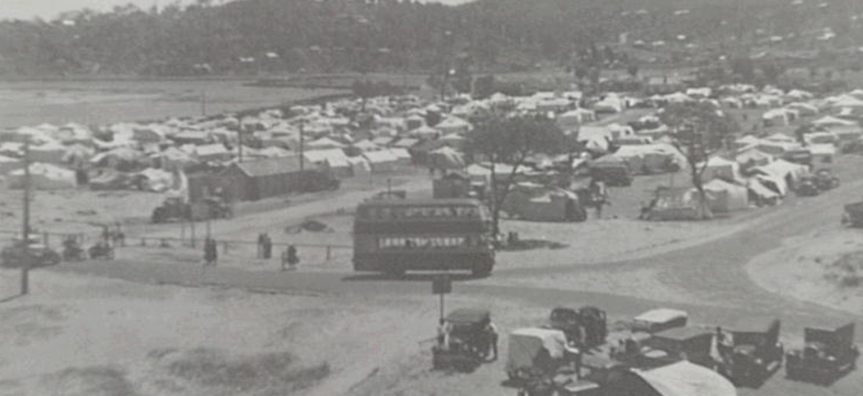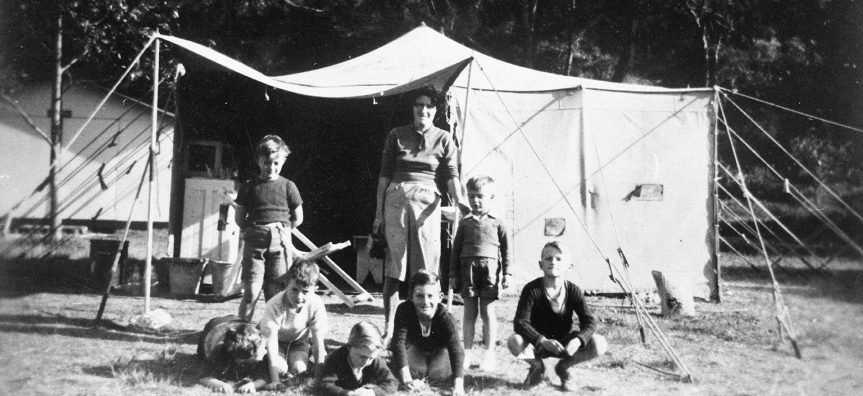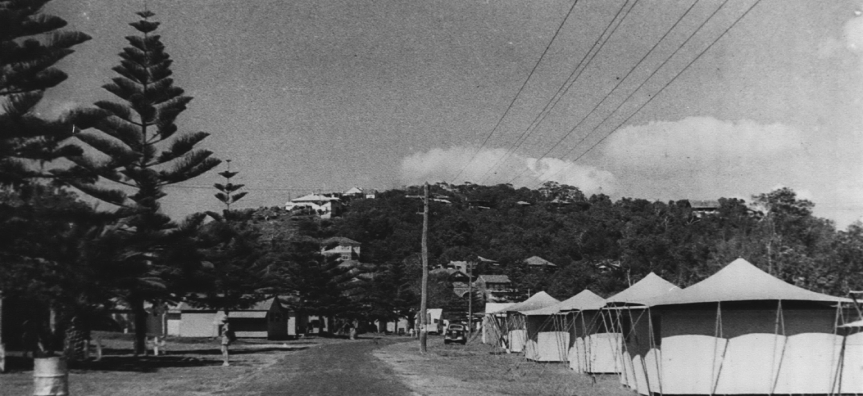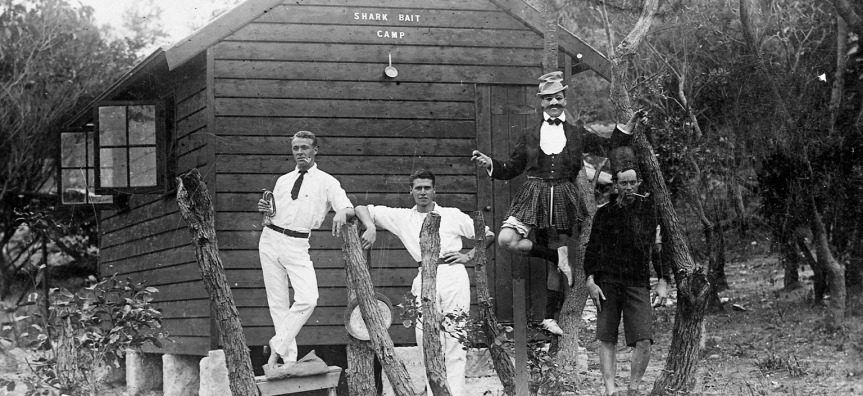With international travel off the cards for a while, many have come to realise that holidaying closer to home can be just as good of a time. We have seen an increase in demand of Australia travel books, particularly those that look at camping and caravanning.
Our Local Studies team were inspired by this trend and so delved into the history of camping in our area as it was allowed in many areas until the 1970s. You will find many historical photographs of Northern Beaches camps and campers in History Hub.

Queenscliff, Freshwater, Dee Why, Long Reef, Whale Beach, Narrabeen Lagoon and Middle Harbour were all popular places to camp.
Camping at Narrabeen Lagoon was a particular favourite which began within a hundred years of European settlement. People camped here not only for leisure but for their well-being as it was common for country Europeans to come to the seaside for their health.
It was a popular spot, with the Evening News reporting in December 1893 that "a more delightful spot for ruralising than Narrabeen does not exist in Australasia" (Evening News Sydney, NSW : 1869 - 1931, p. 3). From the 1930s to the 1950s, Narrabeen became a renowned camping ground with many European refugees spending their first years there.
Freshwater Beach was another favourite spot in the early 20th century, with Amos Randell building a collection of huts he called 'Camp City'.

During the Depression years, councils turned a blind eye to people camping in various locations along the Northern Beaches.
A semi-permanent settlement of unemployed people was reported at Clontarf in 1933 where there were 35 tents and shacks with a total population of 137. (Daily Telegraph, 22 December 1933).
In the 1940s, petrol rationing forced motor campers to holiday closer to home. They headed to Warringah Council’s four main camps - Curl Curl, Narrabeen, Avalon and Palm Beach. During the Christmas period in 1943, there were 542 camps containing over 3,000 people. (Canberra Times, Tuesday 12 Jan, 1943, p4). By 1945, it was estimated that more than 10,000 people spent the Christmas holidays under canvas in the Warringah Council's camping areas.

The largest camps were Lake Park, Narrabeen and Governor Phillip Park in Palm Beach, each boasting 700 tents (Thousands leave Sydney, Sydney Morning Herald, 27 December 1945).
In 1950, the Palm Beach camping area in Governor Phillip Park consisted of about 90% weekenders and 10% permanent residents however closed in 1972 due to community pressure.

Camping became a problem over the years and was eventually banned. As early as 1928, Warringah Councillors were concerned about the ‘eyesore’ it created in Dee Why. The Evening News reported that “One camper even kept a cow – the owner had been warned but the cow still grazed in the area” (Evening News Sydney, 17 April, 1928, p 12).
Today, the only places you can legally camp on the Northern Beaches are Narrabeen and The Basin in Pittwater.

